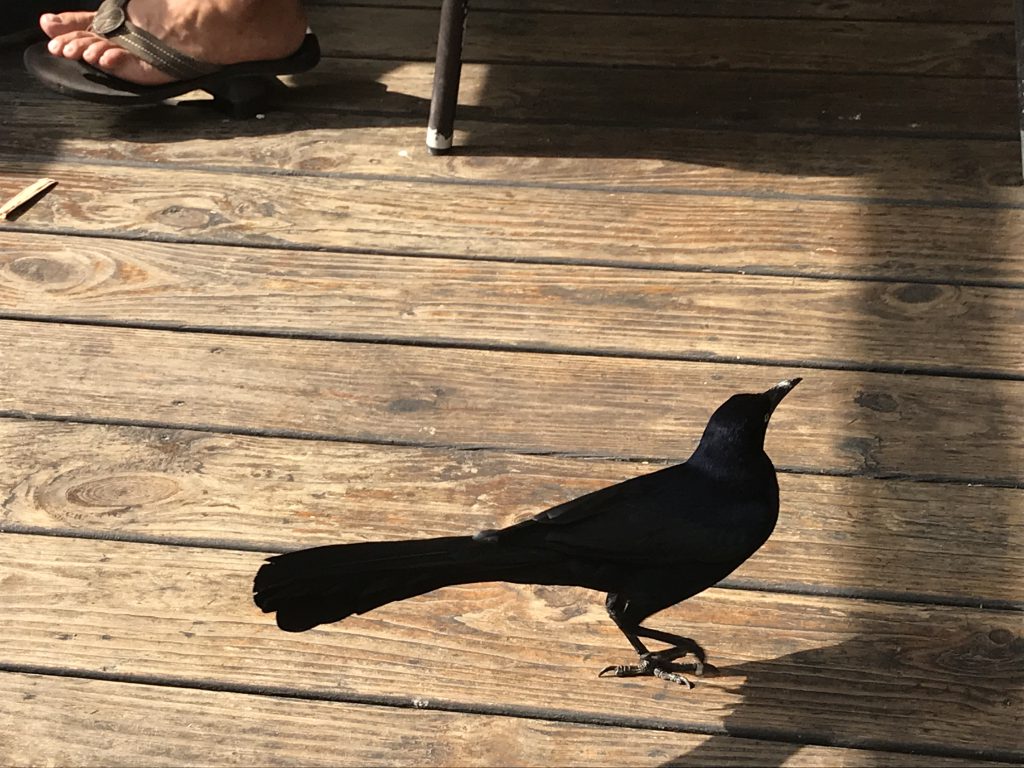
The Great-tailed Grackle is a large and striking bird species, belonging to the family Icteridae. They are mostly found in the southwestern United States, Mexico, and Central America, but also occur in small numbers in some parts of the Caribbean. Adults measure between 16 to 18 inches in length, including their long tail, which can measure up to 7.9 inches in males and 5.9 inches in females. They can weigh anywhere from 5 to 7 ounces, with males being slightly larger and heavier than females.

The Great-tailed Grackle is easy to identify due to its unique features. The male has a glossy black plumage, with iridescent purple and green hues in the right light, and a long, keeled tail that flares out during courtship displays. The female has a brownish-gray coloration, with dark brown eyes and a slightly curved bill. Both sexes have yellow eyes. Juveniles have a streaked appearance, with brownish feathers and a shorter tail than adults.
Great-tailed Grackles are non-migratory birds that reside in their breeding territories year-round. However, their range does expand during the non-breeding season, and they may move to higher elevations or more coastal areas. These birds prefer to inhabit open areas such as fields, lawns, urban parks, and agricultural areas, where they can forage for food easily. They are omnivorous, feeding on a wide variety of foods, including insects, seeds, fruits, and small vertebrates.
The Great-tailed Grackle is a highly adaptable species and has even thrived in urban environments, where they are often seen perched on telephone wires and building rooftops. They are social birds and form large flocks outside of the breeding season, often roosting in communal nests. While they are not considered a threatened species, some local populations have declined due to habitat loss and fragmentation.

In conclusion, the Great-tailed Grackle is a large, striking, and highly adaptable bird species with unique field marks. They are non-migratory and are found in the southwestern United States, Mexico, and Central America. They prefer open areas and are omnivorous, feeding on a wide variety of foods. These birds are highly social and have expanded their range to urban areas, but some populations are threatened by habitat loss and fragmentation.

